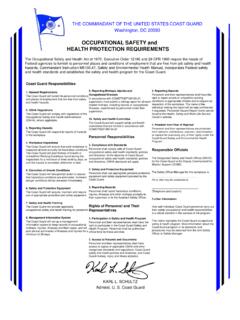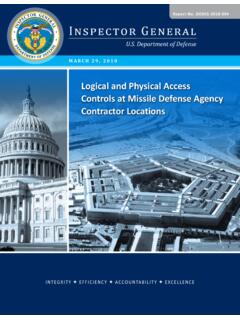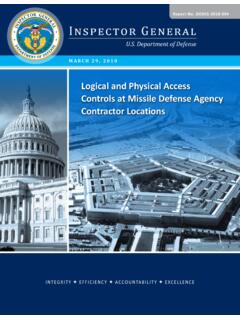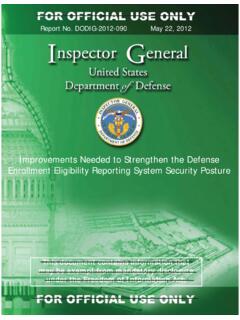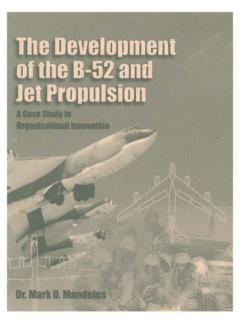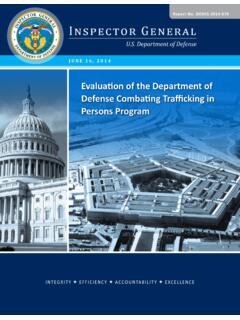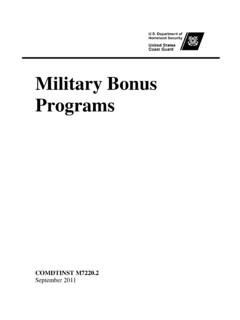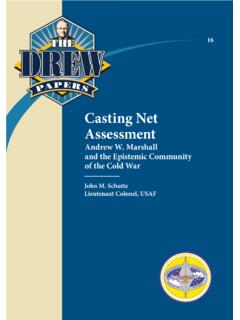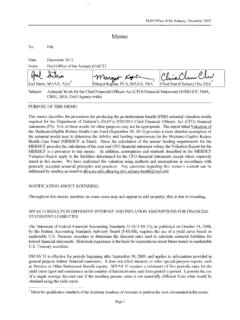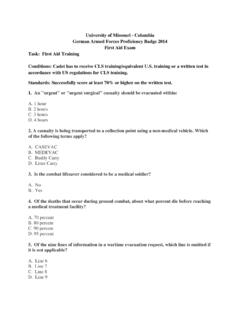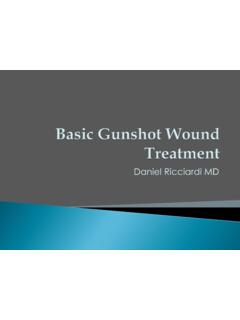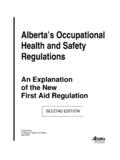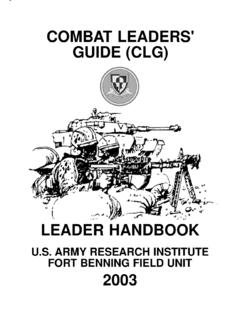Transcription of Air University - United States Department of Defense
1 Air UniversityStyle and Author GuideSecond Edition Air University Press Air Force Research Institute iiProject Editor Marvin BassettISBN 978-1-58566-254-8 Published by Air University Press in April 2015 DisclaimerThe Air University Style and Author Guide provides guidance on writing, editing, and publishing matters related to official publi-cations of Air University . However, it is not directive and should not be considered official Air Force or Department of Defense policy. This publication is cleared for public release and unlim-ited distribution. Cover Art, Book Design, and Illustrations L. Susan FairComposition and Prepress Production Michele D.
2 HarrellVivian D. O NealPrint Preparation and Distribution Diane Clark AIR FORCE RESEARCH INSTITUTE AIR University PRESSD irector and Publisher Allen G. Peck Editor in Chief Oreste M. JohnsonManaging Editor Demorah HayesDesign and Production Manager Cheryl King Air University Press 155 N. Twining St., Bldg. 693 Maxwell AFB, AL 36112-6026 AFRIAir Force Research InstituteiiiContentsFOREWORD vPREFACE viiNOTE ON CHANGES TO THE SECOND EDITION ix Part 1 Air University Style Guide for Writers and Terms and Usage Abbreviations Grammar and Punctuation Grammar Punctuation Mechanics Capitalization Spelling and Word Formation Numbers Italics Display Dots Documentation 135 Appendix A Note Citations 145B Bibliographic Entries 169C Copyright 181 BIBLIOGRAPHY 183 INDEX 187ivcontentsPart 2 Air University Press Author GuideAbout Us 205 Payment to Authors 206 Copyright
3 206 Classified and Sensitive Material 206 Security and Policy Review 206 Production Schedule 207 Accepted Manuscripts 207 Submission Instructions 207 Submitting a Manuscript to the Publication Review Board 209 Submitting an Accepted Manuscript for Publication 209 Formatting Your Manuscript 209 Formatting and Submitting Tables and Illustrations 210 Seed List for Index 212 Permissions 213 Distribution List 214 Checklist 214 AppendixA Publishing Agreement 215B Author s Checklist 221C Illustrations Log 225vForewordAs the intellectual and leadership center of the Air Force, the Air University (AU) produces cutting-edge scholarship on airpower to advance our under-standing of Defense and national security issues.
4 The Air University Style and Author Guide helps ensure that the form and style of AU scholarship are as impressive as the its predecessor, this second edition of AU-1, Air University Style and Author Guide, will prove to be indispensable to AU faculty, staff, students, and prospective authors. Faithful use of this guide will help the airpower community produce scholarly manuscripts that conform to current academic norms of style, format, language, and 1 of this publication, Air University Style Guide for Writers and Editors, provides guidance on such matters as grammar, mechanics, and documentation of sources. Part 2, Air University Press Author Guide, offers instructions for authors who wish to submit manuscripts for possible publication by AU Press.
5 In most matters, the Air University Style and Author Guide follows the Chicago Manual of Style, 16th edition, but it also addresses many military-specific matters of style and mechanics that are not covered in most other style guides. AU-1 is an important reference tool for all AU writers, and I highly encourage its use. STEVEN L. KWAST Lieutenant General, USAFC ommander and President, Air UniversityviiPrefaceWriting is easy. All you have to do is cross out the wrong words. Mark TwainI am pleased to introduce the second edition of AU-1, Air University Style and Author Guide. This edition reflects the latest guidance from the Chicago Manual of Style, 16th edition, and authoritative Department of Defense sources.
6 It is designed to be useful to every researcher and writer at Air Uni-versity, whether authoring a course paper, thesis, journal article, or book for Style Guide includes part 1, Air University Style Guide for Writers and Editors, which has served as AU s style manual since 2001, and part 2, Air University Press Author Guide, which provides instructions for potential AU Press authors. The guidance in part 1 is divided into five sections: terms and usage, abbreviations, grammar and punctuation, mechanics, and documenta-tion. Within each section, entries are arranged strength of the Style Guide is its coverage of military style issues, such as acronyms, military ranks, and specialized military terms.
7 For this reason, the Style Guide may be of interest to those outside the Air Force who write or edit manuscripts about military issues. But it is also an accessible and au-thoritative source of guidance applicable to all disciplines: punctuation, the treatment of numbers, grammar issues such as parallelism and passive voice, and so forth. New users will find the index helpful in locating specific topics. The Style Guide is also available electronically (a PDF file) from the AU Press website, making it easily searchable for key course, the Style Guide cannot address every aspect of writing or every style issue. For topics not covered here, users should consult the Chicago Manual of Style, 16th edition, which this guide follows in most matters.
8 We base spellings and definitions on Webster s Third New International Dictionary of the English Language, Unabridged, and Merriam-Webster s Collegiate Dic-tionary, 11th edition (in the guide, the term dictionary refers to one or both of these sources). For advice on grammatical issues, we recommend the eighth edition of Index to English by Wilma R. and David R. Ebbitt or the seventh edition of Rules for Writers by Diana Hacker and Nancy individuals at AU, the Air Force Research Institute, and AU Press have contributed to the development of this second edition. It is an improve-viiiprefacement but undoubtedly imperfect.
9 We invite interested writers and editors to send comments and suggestions for later editions to Dr. Marvin Bassett, editor of the Air University Style and Author Guide G. PECK, AD-26 Director, Air Force Research Institute ixNote on Changes to the Second EditionNine years have passed since publication of the first edition of AU-1, Air University Style and Author Guide, which replaced the Air University Style Guide for Writers and Editors, also designated AU-1. The new AU-1 intro-duced expanded coverage of stylistic principles, a revised organizational scheme, a numbering system to facilitate the location of entries, and an au-thor guide to assist contributors in submitting their work to Air University Press.
10 Although the second edition of the guide retains those features, it offers both new guidance and changes to existing principles occasioned by additional experience dealing with the needs of Air Force writers and by the appearance of the 16th edition of the Chicago Manual of Style, AU-1 s authoritative source of stylistic guidance. It also adds tabs that allow users to locate the guide s major sections quickly and of the guide will find much that is new in part 1, Air University Style Guide for Writers and Editors. For example, section , Terms and Usage, revises the use of access dates in notes and bibliography entries ( ); covers the treatment of Arabic terms and names ( ); updates the handling of clas-sified sources ( ); provides more in-depth advice about creating and al-phabetizing an index ( ); and offers more latitude in the use of subhead-ings ( ).
